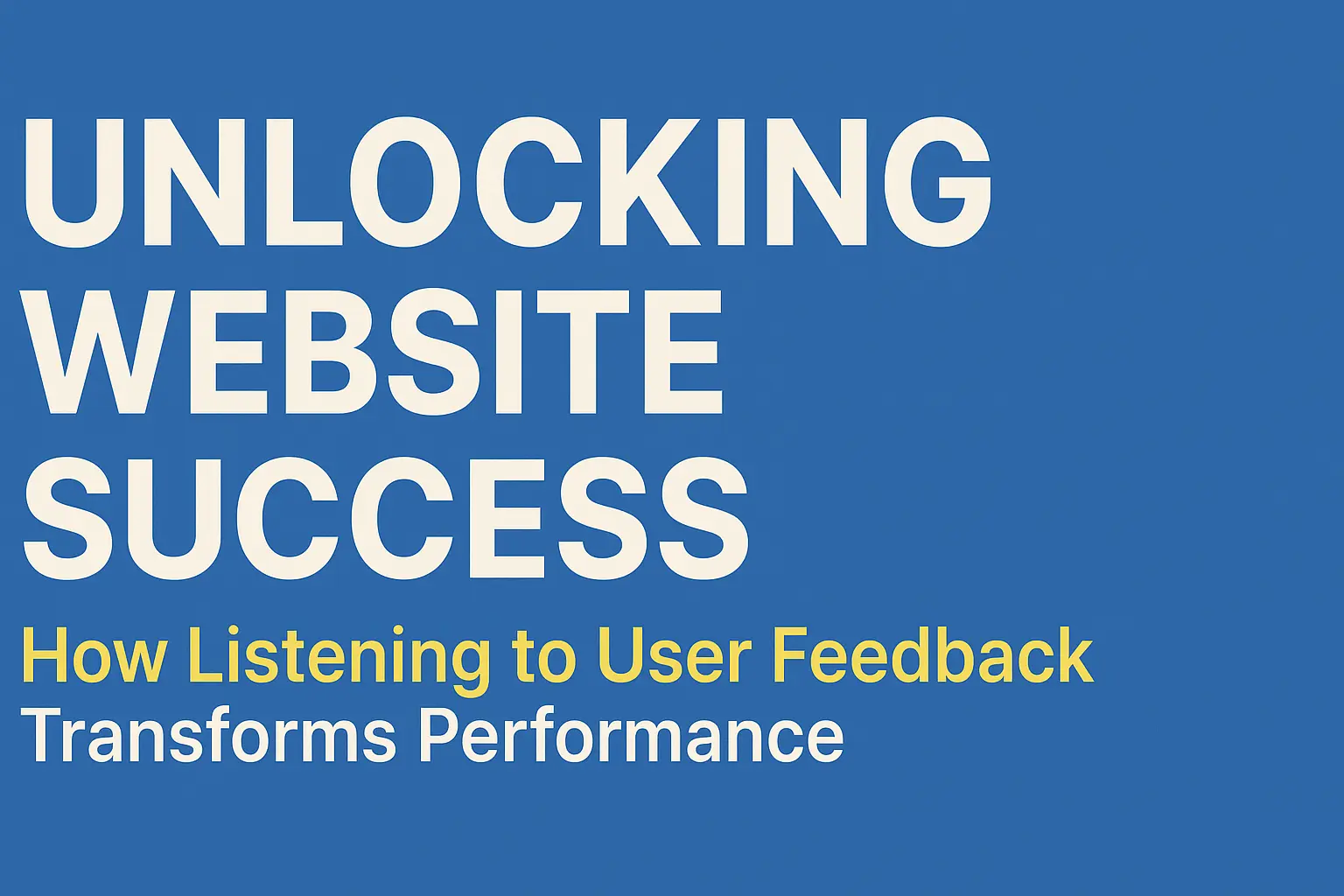Why User Feedback is the Missing Piece?
Many websites focus on visuals, speed, and technical optimization—but overlook the human element. Numbers in analytics tools can tell you where visitors drop off, but they rarely reveal why. That “why” is what user feedback uncovers. It’s the difference between guessing at solutions and knowing exactly what’s holding back your site from performing at its best.
By opening up direct channels for feedback, businesses transform blind spots into actionable insights. The end result is a website that feels responsive, intuitive, and built around the needs of real people—not just assumptions.
The Value of Direct Input
Think of user feedback as real-time research, continuously happening in the background. Instead of conducting costly surveys or long usability studies, you gain ongoing insights from the very people navigating your site.
For example:
- A customer might flag that a “Buy Now” button is hidden on mobile.
- A potential lead may suggest clearer descriptions on your pricing page.
- A returning visitor could highlight frustrations with a slow checkout flow.
These are issues you can’t always spot internally, but to users, they make the difference between completing a purchase and leaving for a competitor.
Moving from Guesswork to Precision
Without feedback, teams are left interpreting data in isolation. A high bounce rate might suggest poor page design, but it could just as easily point to slow load times or confusing navigation. Direct user comments eliminate the guesswork by giving precise context.
This kind of clarity empowers design and development teams to focus on fixes that actually matter. Instead of wasting cycles on changes that may not improve performance, they can prioritize updates that directly impact conversions and retention.
The Role of Tools in Capturing Feedback
Collecting feedback doesn’t need to be complicated. Modern tools allow users to leave contextual notes directly on the live site, giving businesses a clear view of what’s working and what isn’t.
For design-heavy projects, teams often look at markup io alternatives to streamline collaboration. These solutions let stakeholders annotate specific elements of a page, making it easier to align on changes and accelerate revisions. On the other hand, businesses focused on customer input may favor embedded feedback widgets or survey popups that capture thoughts in the moment.
The key is to choose a system that balances efficiency with user experience—making it easy for visitors to share feedback without interrupting their journey.
Building a Culture of Listening
Feedback is only powerful if it leads to action. Too many organizations collect data but never close the loop. When customers see their feedback ignored, it creates frustration. When they see it implemented, it builds trust and loyalty.
A feedback-first culture doesn’t just rely on tools; it requires teams to value transparency and responsiveness. Sharing updates like “We fixed this issue thanks to your feedback” signals that the business isn’t just listening—it’s acting. Over time, this strengthens the bond between brand and customer.
Turning Feedback into Continuous Growth
Websites should never be “finished.” Technology evolves, user behaviors shift, and expectations grow. Feedback ensures your site adapts instead of stagnating.
Every round of input gives fresh opportunities for growth:
- Refining navigation for clarity.
- Optimizing forms to reduce abandonment.
- Enhancing mobile performance for better accessibility.
Each small change compounds into a smoother experience and stronger results. Over months and years, this iterative process can turn a good website into a market-leading one.
From Users to Advocates
When people feel heard, they’re more likely to become advocates. A user who reports a bug and then sees it fixed won’t just return—they’ll trust your brand more deeply. This cycle transforms ordinary visitors into loyal customers who not only return but also spread positive word-of-mouth.
In a digital environment where switching to a competitor is only one click away, loyalty is built on responsiveness. Listening and acting quickly is one of the most effective ways to keep users engaged for the long term.
Conclusion: Listening is Your Competitive Edge
High-performing websites don’t just rely on sleek design or fast load speeds; they’re shaped by the voices of the people who use them. User feedback reveals hidden obstacles, guides smarter improvements, and fosters loyalty through transparency.
Investing in a feedback system—whether through annotation tools, surveys, or other methods—is more than a technical upgrade. It’s a commitment to building a site that grows alongside its audience. And that’s the true secret behind websites that don’t just attract visitors but keep them coming back.
































































